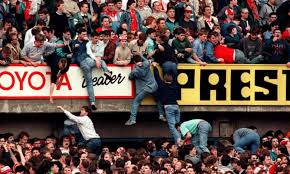Understanding the Hillsborough Disaster

Introduction
The Hillsborough disaster, which occurred on 15 April 1989, remains one of the most tragic events in British sporting history. During an FA Cup semi-final match between Liverpool and Nottingham Forest at the Hillsborough Stadium in Sheffield, overcrowding in the stands resulted in the deaths of 96 Liverpool fans. This catastrophic event not only affected the victims’ families but also transformed the landscape of football safety regulations and public awareness around stadium management.
The Events of That Fateful Day
On the day of the disaster, approximately 54,000 fans gathered at Hillsborough Stadium, despite the fact that the venue was only suitable for 40,000 spectators. The situation escalated when the police opened an exit gate to relieve congestion outside. However, this led to thousands of fans pouring into the already crowded pens, particularly in the Leppings Lane end, causing a crush.
In the chaos, 96 fans lost their lives from asphyxiation and crush injuries. Emergency responders struggled to assist those in distress, further complicating the rescue efforts. The tragedy left a lasting impact on the families of the deceased and the wider Liverpool community.
Aftermath and Legal Proceedings
The aftermath of the Hillsborough disaster was marked by a prolonged struggle for justice. Initial inquiries were met with severe criticism, and many fans were wrongfully blamed. It took nearly three decades for the true circumstances surrounding the disaster to be officially acknowledged. In 2016, the Hillsborough Independent Panel’s report revealed the inadequacies of emergency services and the police during the incident, leading to renewed calls for justice.
In March 2019, 6 individuals were formally charged in relation to the disaster, including former police officers and the match commander. This prosecution aimed to hold accountable those responsible for the tragic events that unfolded that day.
Significance for Future Regulations
The Hillsborough disaster has had far-reaching effects on football safety regulations. Following the tragedy, the Taylor Report was commissioned, leading to significant changes in stadium design in the UK. This included the introduction of all-seater stadiums in the top tiers of English football, addressing overcrowding and enhancing safety protocols during matches.
Conclusion
The Hillsborough disaster serves as a cautionary tale regarding the importance of proper stadium management and fans’ safety. It also exemplifies the power of community and activism, as many families of the victims have tirelessly campaigned for justice over the years. The legacy of Hillsborough continues to spur discussions about safety, fans’ rights, and the need for accountability in sports. As fans, clubs, and authorities reflect on this dark chapter, it is crucial that lessons from the past shape the future of football.
